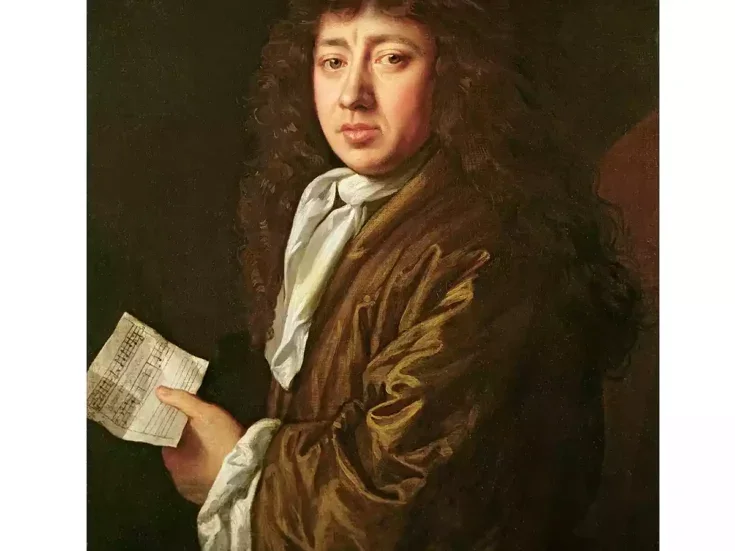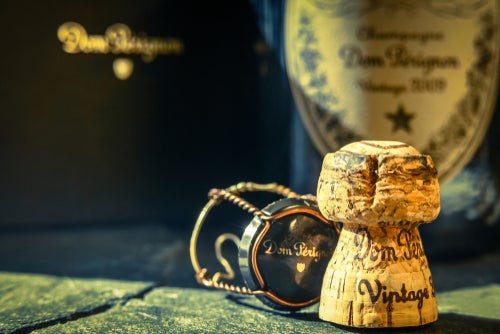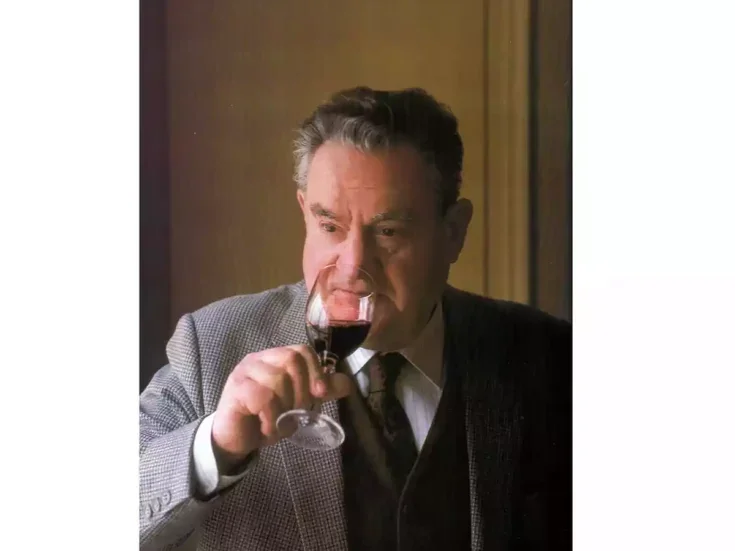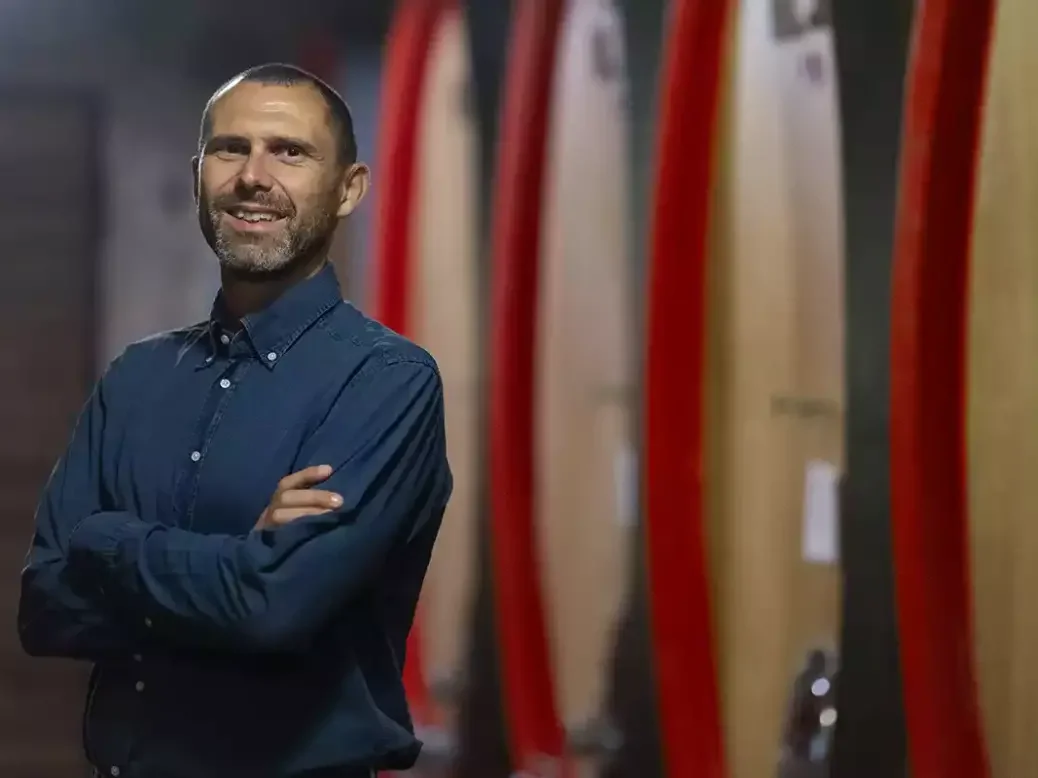
Robin Lee visits Montalcino and finds Poggio di Sotto in an important moment of transition.
In its essence, Montalcino is one of the easiest appellations to understand. The wines produced here are like the place, and at its best, Brunello di Montalcino emits a resonant and poetic clarity that is difficult to equal and impossible to forget. The vineyards and olives are like the stitches of an ancient tapestry embellished over millennia, with deep-creased furrows fading out into the surrounding, dream-like, mossy oak forests. The intact and historical medieval hilltop village in dark travertine stone dates back a thousand years and more, to Etruscan times. It is an Arcadia with a powerful masculine energy, and Poggio di Sotto’s wines in particular are the classic expression.
A couple of years ago, I participated in a comprehensive tasting of Rosso di Montalcino, which is Montalcino’s second wine, produced in small quantities by the elite Brunello estates from young vines or declassified wines to provide an accessible and somewhat more affordable experience, and on a larger scale by the estates who do not have the rights to produce Brunello (see WFW 77, pp.32–34). In effect, the best Rosso made by the most sought-after estates is so good, as well as such good value, that it can be almost impossible to find after release and quite expensive on the secondary market. In this rarefied category, Poggio di Sotto’s Rosso stands out among a select few. Powerful, spicy, and saline, persuasive, unrushed, and understated, Poggio di Sotto Rosso is distinguished by an astonishing elegance and finesse, and a transparent lightness that transcends its power and depth—and that can be surprising for those who do not know these wines and think they might be heavy, rough-hewn, and cumbersome.
Although Brunello di Montalcino wines should be simple and straightforward, often, due to maladroit interference, they are not. Many wines with the Brunello designation are marred by too much new oak, heavy-handed extraction, or oxidation caused by less-than-ideal conditions during élevage or else, veering in the other direction, lacking in elegance—weedy, rustic, and sour. Although Montalcino is one of Tuscany’s most prestigious wine regions, it is nevertheless a young region, and it has attracted big personalities and egos: trustafarians and idealists who are neither shy nor humble and who have plenty of money at their disposal to seek vinous fame and consolidate their fortune in a vinous currency. The rules for Brunello are simple but time-consuming compared to other Sangiovese wines. A DOC since 1966, Brunello di Montalcino became Italy’s first DOCG in 1980. Brunello di Montalcino requires a minimum of two years in oak and another four months in bottle (six months for Riserva), though in practice the aging process is often much longer. Brunello—now designated as a local name for Sangiovese and not a specific clone as once claimed—is, however, defined and determined by its origin and by Montalcino’s emergent subzones, as well as by the winemaking appellation as a whole.
Poggio di Sotto: Blessed by nature
Poggio di Sotto is in the commune of Castelnuovo dell’Abate, to the south of the appellation. It is one of the warmest of Montalcino’s subregions, but this is moderated by the north and southwest expositions of Poggio di Sotto’s vineyards and its high altitude on a steep outcrop rising up to 1,400ft (440m) above sea level. Schistous galestro contrasts with parcels of pebble-strewn red, rocky clays and gray marl compacted with mineral conglomerates, which encapsulate in this small estate the astonishing range and variety of Montalcino’s vineyard soils, originating from alluvial deposits, volcanic activity, and shifting tectonic plates that upended the teeming seabed that thrived here in ancient times. Poggio di Sotto comprises 48ha (120 acres), of which 20ha (50 acres) are under vine, with another 3ha (7.5 acres) coming into production. Unlike most of Montalcino, which was wild forest until the recent past, what is now Poggio di Sotto was farmed by the nearby Abbey of Sant’Antimo from time immemorial. Protected from the harshest extremes of weather by the extinct volcano of Monte Amiata looming on the horizon, as well as by the moderating effects of the River Orcia to the east, avoiding excessive heat in summer thanks to the cooling sea breezes from the west, Poggio di Sotto is blessed by nature. The position of the estate creates a balance of ventilation and shelter. Cool nights contrasting with the dry hot days during the ripening season preserve acidity and make for summers here that are quite perfect, not just for producing wine. The Poggio di Sotto estate has been organic since its foundation in 1989, which is less difficult here than it would be elsewhere, since in this region the sun and wind protect against many disease threats, and pests are likewise controlled by a biodiversity that promotes natural resistance. Montalcino is remarkable among Italian wine regions for its high biodiversity; the total vineyard area of the appellation is a mere 15%, and most of Montalcino is still primeval forest.
Since 2011, Poggio di Sotto has been under the ownership of brother and sister Claudio Tipa and Maria Iris Bertarelli, the wealthy owners of Castello Colle Massari, a flagship of the Montecucco region, and the under-the-radar but nevertheless well-regarded Grattamacco estate in Bolgheri. Poggio di Sotto, a cult wine, is however the jewel in their crown. Poggio di Sotto’s lofty reputation was created under the legendary stewardship of its previous owner, Piero Palmucci, who had made his fortune in international shipping but then transformed himself into an expert in Montalcino’s microclimates and soils. Palmucci carried out extensive, intense research, always with the aim of producing the best wine in the world and in the certain expectation of realizing the beautiful purity of expression that still defines Poggio di Sotto today. Palmucci created his wines with the help of renowned consultant winemaker Giulio Gambelli, who by then was already famous as Italy’s leading expert on Sangiovese, thanks to his prior involvement with other important Tuscany estates, including Soldera’s Case Basse and Montevertine, and not least for his important role in resuscitating the reputation of Sangiovese at a time when it was not well regarded.
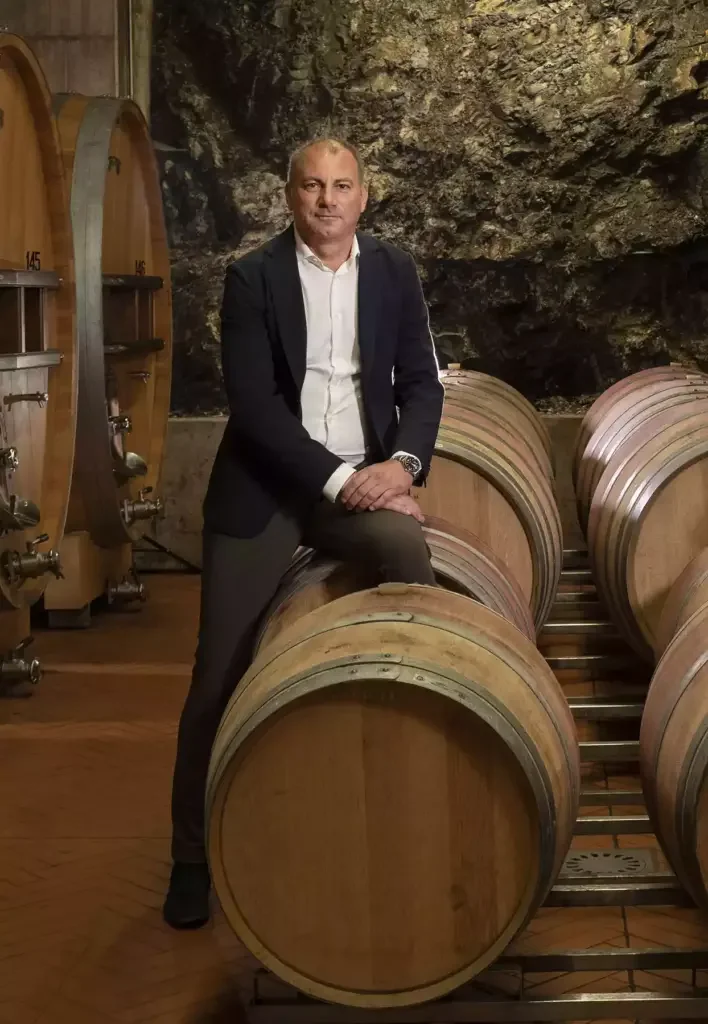
Building on the previous work of Palmucci—and in partnership with Florence University—the new owners of Poggio di Sotto conducted a clonal research project starting in 2011 that entailed selecting vine wood from the estate’s oldest vineyards, which had been planted with earlier massal selections in 1975, ’79, ’82, ’85, and ’89. This monumental endeavor took more than three years to complete, culminating in 2014 with the planting of a proprietary vineyard with 182 distinct Sangiovese biotypes that had been identified and selected from Poggio di Sotto’s older vineyards. This enormous selection is now the basis for all the estate’s new vineyards that are being planted or replanted. Leonardo Berti, Poggio di Sotto’s winemaker, explains that no selection is made from the 182 clones. They are planted as a field blend: “Some of the clones may be preferable, but the special thing we are trying to do, the complexity we are aiming for, comes from the huge and almost crazy mix of so many clones, some of which are super-productive and some so unproductive that they might produce three bunches. We think this gives us the extra something on every parameter—this huge and unmanaged and unquantifiable variation.” It is a refreshingly unscientific and fatalistic approach in an age of overreliance on science, overambitious precision, and unrealistic overanalysis of clonal selections, where the objective tends to be trying to achieve a specific predetermined outcome, leaving nothing to chance. Other estates in Montalcino have focused on selecting their one best clone and relying on that exclusively for new vineyards, but the clonal selection at Poggio di Sotto is revelatory because it is moving in the opposite direction—essentially, away from the philosophy of clonal selection, toward a true massal selection, and encouraging the proliferation of genetic diversity at a time when the loss of genetic diversity in grapevines is becoming an existential threat for the future of viticulture.
According to Berti, the main challenges the estate currently faces are due to climate change, which takes its toll with extreme vintages, severe spring frost risk, and hot, arid summers. The wide range of genetic material in the vineyard is an important tool of resistance, of course, as well as rootstocks adapted for drought (110R, Kober 5BB) that are being introduced in the new vineyards, and pruning methods that respect the sap flow of the vine and prevent vine wood disease. Yet by far the most significant change on the horizon is the introduction of fixed irrigation, which was made legal by the Brunello Consortium in 2017 and, in practice, has been allowed by derogation since 2013. For now, Poggio di Sotto does not have the infrastructure for consistent irrigation on a regular basis, but building it, creating the reservoirs, and investing in the necessary technology will be a priority for Poggio di Sotto in the coming years.
The planned introduction of irrigation at one of the most emblematic and traditional estates in Montalcino will be a determinant factor over the next decades and into the future, given that recent vintages—such as 2020, 2021, and 2022—have all been characterized by excessive heat, sometimes compounded, as in 2021, by frost damage, which reduced yields and increased the concentration in the remaining grapes. These effects can, to some extent, be remedied by a judicious use of irrigation, which also mitigates the severe heat stress that can affect vine longevity, but at the same time there are also very real risks to wine quality when irrigation is used and then inevitably relied upon. The great wine regions have traditionally not allowed irrigation for this reason, because it is anathema to the philosophy of terroir. Montalcino’s leading luminary Gianfranco Soldera, for example, inveighed against it and opposed it on principle.
To be sure, a certain insouciance can be detected in the offhand manner of the present management at Poggio di Sotto, which takes for granted the inevitability of introducing irrigation and presents it as something that should not even be seen as controversial, whereas irrigation can benefit vines but also carries serious risks—not just for wine quality but also for the holistic ecology of the vineyard and its surroundings. There will surely be many important challenges that Poggio di Sotto will face in the future. Another problematic issue when considering the introduction of irrigation at an estate like Poggio di Sotto—renowned for its low environmental impact, prized for its small volume of production, and emulated for its organic protocols—is the wider social impact that may be the result once irrigation at elite wine estates becomes the new normal and is universally adopted, as seems inevitable. Dry-farmed vineyards do not deplete water resources—on the contrary, sensitively managed vineyards that do not use synthetic fertilizers retain water and can prevent soil erosion. Water is, after all, a limited resource, and irrigated vineyards compete for water against people, as well as the civic infrastructure, animals, wildlife, industry, and all other agriculture. In the future, if even the most traditional wine regions and their most elite wines are produced using irrigation, wine production—which, in Montalcino, can certainly be seen as a business that is conducted exclusively by the rich and for the rich—could become controversial if it depletes water resources. When history and old traditions are thoughtlessly discarded, there is always the risk of losing legitimacy and popular support. There are many people in the world who do not like wine and what it represents, and who will be ready and waiting to denounce it. A dry-farmed, low-volume-production, organic vineyard that suffers the vagaries and vicissitudes that nature imposes is much more difficult to condemn.
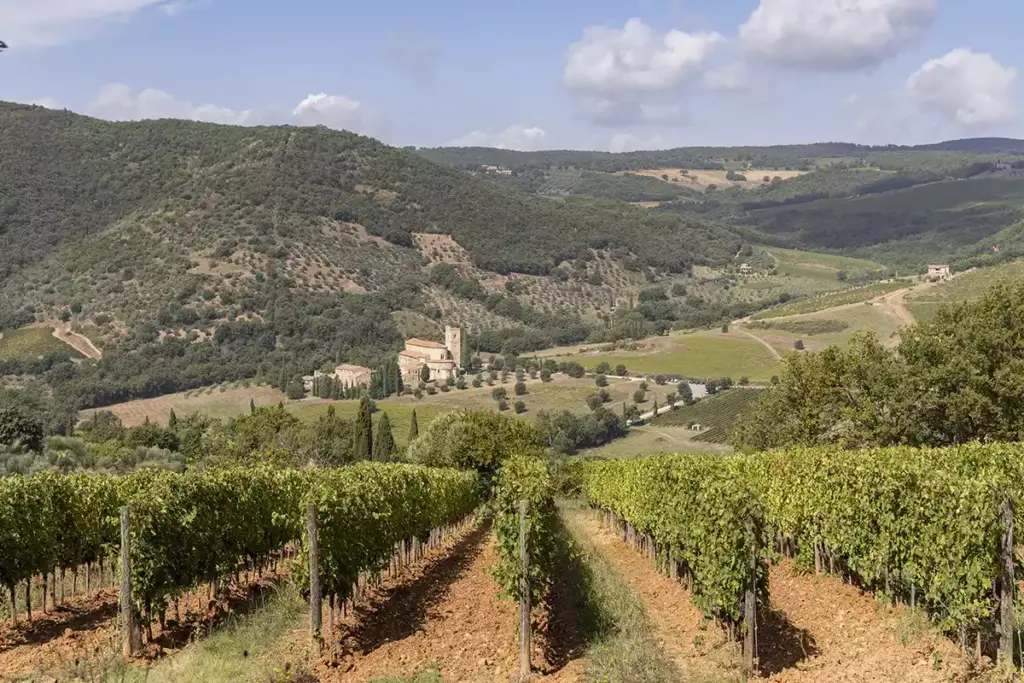
A time of transition
Vinification at Poggio di Sotto is traditional, in 50hl (1,320-US-gallon) wood vats, with gentle, frequent, and prolonged pumping-over. The grapes are destemmed but not crushed. In January or February, the wine is transferred to 30hl (792-US-gallon) Slavonian oak foudres. There is no overt oak influence. The amount of time the wine spends in foudres depends on the character of the vintage: 2016 and 2019 had longer aging than 2018 and 2020. During élevage, the wine is racked once in the first year, and then it stays still, settling, until it is transferred to concrete vats and then bottled. The Rosso tends to be bottled two years after harvest. (By law, it must be aged in wood for one year.) For Brunello and Riserva, the wine stays in the foudres for at least 36 months, but typically four years, before it is bottled, and the Riserva a year longer. Approximately 30,000 bottles of Rosso are produced a year, and 35,000 bottles of Brunello. The Riserva is between 4,000 and 5,000 bottles in the years it is produced, and it is often from a single plot, which, counterintuitively, in cooler years tends to be from the higher slopes at between 1,000 and 1,300ft (300–400m), and in hotter years from the lower vineyards with cooler clay and galestro soils. The selection of the Riserva, Brunello, and Rosso does not follow a formula, and the decision on the categories and the length of time the wines are aged depends on the wine’s individual character and the vintage.
Poggio di Sotto is more than just a great wine; it represents an individual quest for excellence and even, perhaps, perfection. It is recognized as one of Italy’s greatest wines, and it must be hoped that its reputation survives the handover not only to the new owners and new management but also to a new generation of consumers. The future of Poggio di Sotto does not depend on the efforts or genius of just one man; it will be a community effort and requires a shared idealistic dedication to the pursuit of excellence for its own sake, undistracted by short-term goals of profitability or critics’ scores. Both Montalcino as a whole and Poggio di Sotto in particular are in a transition phase—it could be seen as akin to the transition from the Renaissance to the Enlightenment—and it will be interesting to see how that goes.
Tasting Poggio di Sotto
2021 Poggio di Sotto Rosso
Brilliant ruby color, transparent with a cherry red rim. Shy on the nose. Bright red fruit, pomegranate juice, with a bitter edge of laurel, loquat and sweet persimmon that opens on the palate. A cherry-brandy note recalls the hot vintage but is balanced by juicy freshness, natural richness, and earthy minerality. This Rosso has emerged tempered from the furnace, elegant and suave. 2024–29. | 94
2020 Poggio di Sotto Rosso
Gorgeously perfumed on the nose with a premature hint of brick color. On the palate, there are beguiling aromas of red roses, cherry extract, cranberry, and pomegranate, followed up with a notable tannic grip. This wine is serious, structured, and long, with appetizing hints of spicy cayenne interlaced with sun-dried tomato and dried bresaola. The finish is long and impressive, with an elegant succulence that suggests this is a wine that can develop and improve further over another 6 or 7 years. 2024–30. | 95
2019 Poggio di Sotto Brunello di Montalcino
Violet and rose aromas, with dark berry juice and tightly knit, chewy tannins, make for a brooding and yet well-structured wine. The perfume of tobacco leaf, fresh almonds, and joyous red berry fruits combines gracefully with darker notes of burned umber, star anise, hints of dried orange peel, and unagi sushi, with a touch of soy sauce. A sensual and textural wine with high levels of extract that is still in the emergent phase and promises great things to come. 2029–45. | 95
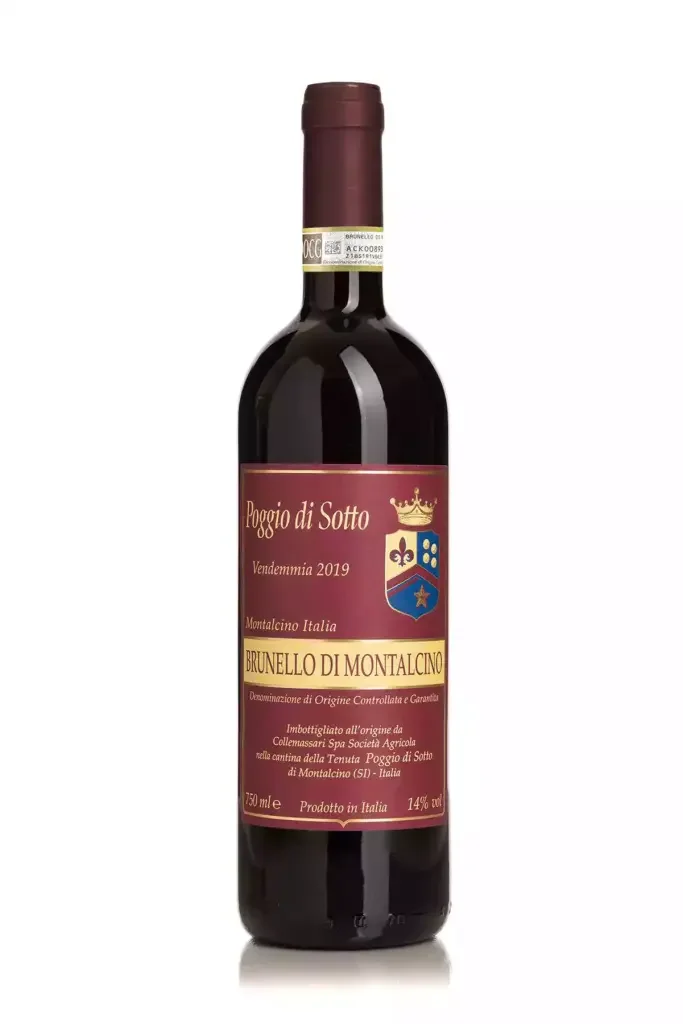
2018 Poggio di Sotto Brunello di Montalcino
The 2018s were looked at askance at the time, and in fact it was a difficult year, with botrytis decimating at least 25% of the harvest. This is not a typical Brunello—it is more fine-boned, though nevertheless vibrant and highly structured. Flavors of sweet red berries and plums mingle with orange zest and rose petals, give way to camphor, sandalwood, and cinnamon bark as the wine unfolds, with layered, enveloping, richly exotic notes of oolong and allspice coming to the fore. A wonderful wine, though light-bodied compared to its fellows, and probably not best suited to long cellaring. 2024–34. | 96
2018 Poggio di Sotto Brunello di Montalcino Riserva
Dark and spicy, supported by gratifying, tactile tannins that feel like sun-warmed bricks, this wine comes from what seemed at the time like a difficult vintage. It is from a single-vineyard plot harvested in two passes 15 days apart to preserve the vibrant purity and yet also allow the sumptuous fruit to express itself. A mellowed intensity of blackberries, dark cherries, and wild strawberries tantalizingly unfolds on the palate, deftly lifted by a tensile, crystalline acidity. Astonishingly fresh and pure, this Riserva continues to unfurl its secrets the more time you allow it to breathe in the glass, revealing beguiling and complex savory notes of fennel, chimichurri, maple syrup, and a mysterious whiff of tobacco smoke. 2024–40. | 98
2015 Poggio di Sotto Brunello di Montalcino Riserva
Fresh, bright, young Chekhovian cherry fruit and juicy, succulent redcurrant, with a beauteous wafting perfume of hot summer days and fig leaves, herald this stunningly poised, graceful, and youthful Riserva. It has a slow evolution in the glass, showing deeper plums and violets as it unfolds. The overall impression here is this wine’s energy, which has clearly benefited from those long years in oak, where many of its peers stumble. Mulberry, white pepper, and balsam gradually unfurl and hint at further unseen depths yet to be explored. The tannins are tightly wound, and glorious mysteries abound, like a fairy dance deep in the woods. This wine can surely benefit from more time in the cellar before it reaches its peak of perfection. 2028–45. | 99+

